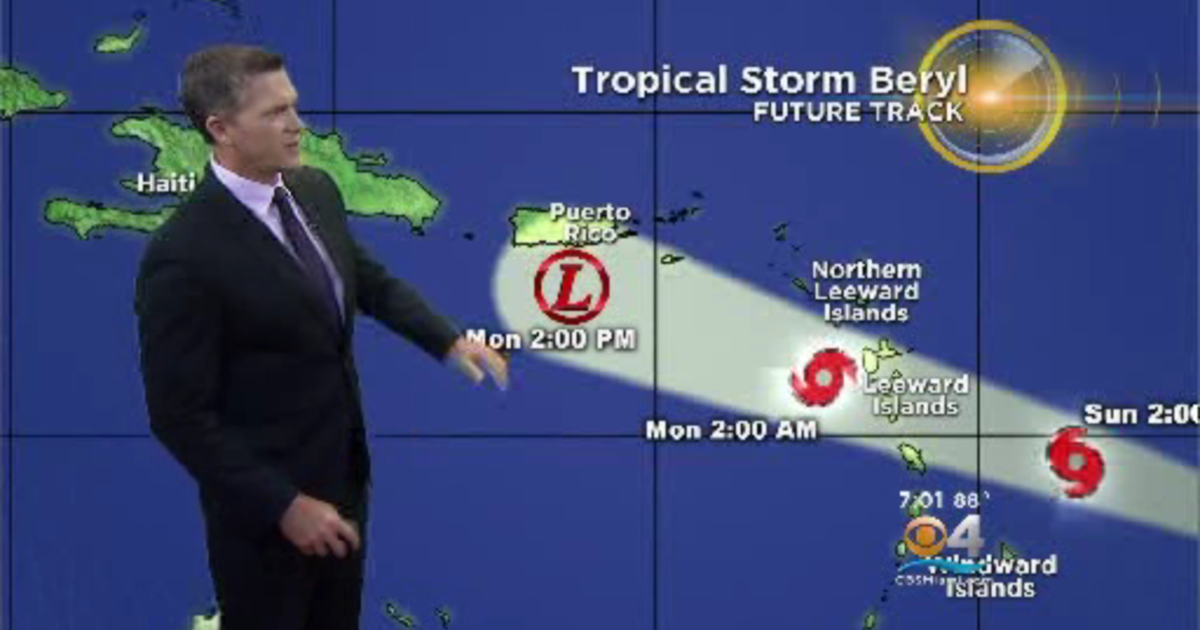Hurricane Beryl’s Impact on Jamaica
Jamaica beryl hurricane – Hurricane Beryl was a Category 1 hurricane that made landfall in Jamaica on July 5, 2022. The hurricane brought heavy rainfall, strong winds, and storm surge to the island, causing widespread damage and flooding.
The Jamaica Beryl hurricane ravaged the Caribbean, leaving a trail of destruction in its wake. Amidst the chaos, there emerged a beacon of hope in the form of Senator Tim Scott , who led relief efforts with unwavering compassion and determination.
His tireless advocacy ensured that the victims received the support they desperately needed, as the hurricane’s impact lingered on the battered islands.
Hurricane Beryl’s maximum sustained winds were 85 mph (137 km/h) when it made landfall in Jamaica. The hurricane also brought heavy rainfall to the island, with some areas receiving more than 10 inches (25 cm) of rain. The storm surge associated with the hurricane was up to 4 feet (1.2 meters) high, which caused flooding in coastal areas.
As Hurricane Beryl barrels through Jamaica, its relentless winds and torrential rains leave a trail of devastation. Meanwhile, on the gridiron, the Pittsburgh Steelers have been making waves with their acquisition of Brandon Aiyuk. His lightning-fast speed and agile footwork have drawn comparisons to some of the league’s most electrifying wide receivers.
Yet, as the storm rages on in Jamaica, it serves as a sobering reminder of the fragility of our world and the importance of resilience in the face of adversity.
Immediate Impact
The immediate impact of Hurricane Beryl on Jamaica was widespread damage and flooding. The hurricane damaged homes, businesses, and infrastructure, and caused power outages and water shortages. The flooding also caused damage to crops and livestock, and disrupted transportation and communication.
Preparedness and Response to Hurricane Beryl

Jamaica implemented comprehensive preparedness measures prior to Hurricane Beryl’s arrival. The government activated its National Emergency Operations Center and issued timely weather advisories, evacuation orders, and public safety announcements. Local communities organized disaster preparedness committees and conducted drills to raise awareness and encourage community response plans.
During the hurricane, emergency response teams were deployed for search and rescue operations, evacuations, and damage assessment. The Jamaican Red Cross and other aid organizations provided shelter, food, and medical assistance to affected communities. Post-hurricane response efforts focused on restoring essential services, infrastructure repairs, and providing ongoing support to vulnerable populations.
Effectiveness of Preparedness and Response Measures
Jamaica’s preparedness and response measures proved largely effective in mitigating the impact of Hurricane Beryl. The timely warnings and evacuation orders allowed many residents to seek safety before the storm’s arrival, reducing the number of casualties. The coordinated response efforts ensured that essential services were restored quickly, and the provision of aid and support to affected communities helped alleviate the immediate impact of the hurricane.
Long-Term Impacts and Recovery from Hurricane Beryl: Jamaica Beryl Hurricane
:quality(70)/d1hfln2sfez66z.cloudfront.net/11-12-2019/t_423d5e2948964ee2aff5c801c5f08a9b_name_CB725C2ADED4425FB11D26B8BA968321_1.jpg)
Hurricane Beryl’s fury left lasting scars on Jamaica, impacting its economy, society, and environment. The road to recovery was arduous, marked by challenges and successes that shaped the nation’s resilience to future storms.
Economic Losses
- Infrastructure damage: Roads, bridges, and buildings were severely damaged, disrupting transportation and commerce.
- Agriculture losses: Crops and livestock were decimated, threatening food security and livelihoods.
- Tourism downturn: The vital tourism sector suffered a setback due to damaged infrastructure and safety concerns.
Social Disruption, Jamaica beryl hurricane
- Displacement and homelessness: Thousands of people were displaced from their homes, seeking shelter in temporary camps.
- Health concerns: Access to clean water and sanitation was compromised, leading to an increased risk of disease.
- Education and employment disruption: Schools and businesses were closed, affecting students’ education and workers’ livelihoods.
Environmental Damage
- Coastal erosion: The storm’s powerful winds and waves caused significant coastal erosion, threatening coastal communities.
- Deforestation: High winds uprooted trees, contributing to deforestation and soil erosion.
- Water contamination: Flooding contaminated water sources, posing a risk to human health and ecosystems.
Recovery Efforts
In the aftermath of the storm, the Jamaican government and international aid organizations mobilized to support the recovery process:
- Infrastructure repair: Roads, bridges, and buildings were rebuilt or repaired, restoring transportation and commerce.
- Housing assistance: Temporary shelters were established, and permanent housing solutions were provided for displaced families.
- Economic aid: Grants and loans were provided to businesses and farmers to support their recovery.
Challenges and Successes
The recovery process was not without its challenges:
- Limited resources: The government and aid organizations faced resource constraints in meeting the extensive needs.
- Bureaucratic hurdles: Delays in accessing aid and implementing recovery plans hindered progress.
- Social and economic disparities: Vulnerable communities faced greater challenges in accessing recovery assistance.
Despite these challenges, there were also notable successes:
- Community resilience: Local communities played a vital role in the recovery process, providing support and assistance to those in need.
- International collaboration: Aid organizations from around the world provided valuable resources and expertise.
- Lessons learned: The experience of Hurricane Beryl informed future hurricane preparedness and response strategies.